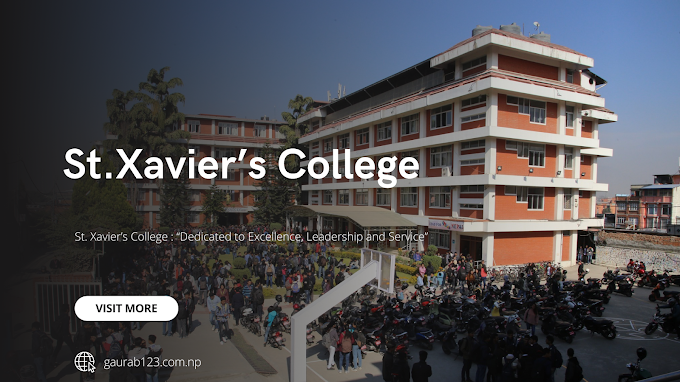Class 11 Physics New Model Question
Class 11 Physics is a crucial subject that lays the foundation for advanced studies in science and engineering. To excel in this subject, students need ample practice and exposure to a variety of question patterns. The introduction of the Class 11 syllabus has created a need for new model questions that align with the updated curriculum. In this article, we present a recently provided Class 11 Physics new model question by Kathmandu Bernhardt College, highlighting its significance and usefulness for students.MCQs Of Class 11 Physics New Model Question (SET 1)
1) A value for the acceleration of free fall on Earth is given as (20士2)m/s².Which statement is correct?
a) The value is accurate but not precise
b) The value is both accurate and precise
c) The value is neither precise or accurate
d) The value is precise but not accurate.
Answer: a)The value is accurate but not precise
The True value of the acceleration of free fall is 9.81m/s²
Now acceleration of free fall can be form (10-2)=8m/s² to (10+2)=12m/s²
The actual true value 9.8 lies within the range given by the uncertainty, and therefore the stated value is accurate. [C and D are incorrect]
Precise deals with how small or large the uncertainty is. A precise set of measurements would have a small scatter of readings.
Here, the value is Not precise as the uncertainity is large (relative to the mean value of 10)
2) Which of the following is not a vector quantity?
a)torque
b)energy
c)angular momentum
d)electric field intensity
Answer: b)energy
Energy is not a vector quantity because energy has not any direction.
2)A constant force pushes a block along a horizontal frictionless surface. The block moves from rest through a fixed distance. What is the relationship between the final speed v of the block and its mass m?
a) √v ∝ 1⁄m
b)√v ∝ √m
c)√v ∝ 1⁄√m
d)√v ∝ m
Answer: c)√v ∝ 1⁄√m
v²=u²+2as
Since the block moves from rest, u=0
v²= 2as
Since a constant force is applied, F=ma, giving a=F/m
So, acceleration a ∝1/m
Replacing the relationship a ∝1/m into the equation involving velocity
v ² ∝ 1/m
√v ∝ 1⁄√m
3) A car has a mass m. A person needs to push the car with a force F in order to give the car acceleration a. The person needs to push th car with a force 2F in order to the car acceleration 3a. Which expression gives the constant resistive force opposing the motion of the car?
a) ma
b) 2ma
c) 3ma
d) 4ma
Answer: ma
4)Which graph represents the motion of a car that is travelling along a straight road with a increase uniformly with time?
Answer: A
We need to look at the exes carefully in each graph so that we can know which quantities are involved and which other quantities may be obtained from the gradient or area under graph.
Travelling along a straight road with a speed that increases uniformly with time means that there is a uniform acceleration that is the acceleration is constant; the acceleration is not changing.
Graph A: acceleration-time graph - Acceleration has a constant value
Graph B: acceleration-time graph - Acceleration is increasing from a non-zero value
Graph C: displacement-time graph - straight line with a positive gradient- Velocity is constant
Graph D: displacement-time graph- horizontal line i.e velocity is 0
5) Work done by frictional force is
a) zero
b) negative
c) positive
d) infinity
Answer: b)
Frictional force is always opposing the relative motion of the body. When a body is dragged along a rough surface, the frictional force will be acting in the direction opposite to the displacement. Thus, the work done by the frictional force will be negative.
6) The working principle of a rocket is based on the principle of conservation ofa) velocityb) forcec) linear momentumd) friction
Answer: c)The principle of rocket propulsion works on the 'Newton's Third Law of Motion'. It states that, 'to every action, there is always an equal and opposite reaction'.In the case of a rocket, the engine emits hot burning gases in the downward direction. These gases apply an equal and opposite reaction force to the rocket in the upward direction.This is how a rocket is propelled.The principle of conservation of momentum states that whenever two bodies collide or get separated, then their total momentum before collision or separation is equal to their total momentum after collision or separation.Since the gases of the rocket and the rocket are stationery at the start, their total momentum is zero. After the gases start burning, the momentum imparted to the rocket is equal and opposite to that of the gases. Hence their total momentum is zero.
7) The field of view is minimum fora) concave mirrorb) convex mirrorc) plane mirrord) parabolic mirror
Answer: a)
The field of view is minimum for concave mirror because they are converging mirrors.
8) For a minimum deviation of light inside the prism the angle of emergence should be equal toa) angle of prismb) angle of incidencec) angle of refractiond) angle of deviation.
Answer: b)
i=e for minimum deviation
9) If we put an object at the focus of a convex lens, the refracted rays area) parallelb) convergingc) divergingd) both converging and diverging
Answer: d) both converging and diverging 10) The resistance of a wire is R. If the length of the wire is doubled by stretching, then the new resistance will bea) 2Rb) 4Rc) Rd) R/4
Answer: b)
As the length of wire gets doubled, the cross-sectional area will become half of its previous value because volume of wire remains constant. Hence, we can see that the new resistance is four times the previous resistance.
11) What are the elementary particles with half spin called?a) quarkb) fermionsc) bosonsd) hadrons
Answer: Fermions
In the case of a rocket, the engine emits hot burning gases in the downward direction. These gases apply an equal and opposite reaction force to the rocket in the upward direction.
This is how a rocket is propelled.
The principle of conservation of momentum states that whenever two bodies collide or get separated, then their total momentum before collision or separation is equal to their total momentum after collision or separation.
Since the gases of the rocket and the rocket are stationery at the start, their total momentum is zero. After the gases start burning, the momentum imparted to the rocket is equal and opposite to that of the gases. Hence their total momentum is zero.
7) The field of view is minimum for
a) concave mirror
b) convex mirror
c) plane mirror
d) parabolic mirror
Answer: a)
The field of view is minimum for concave mirror because they are converging mirrors.
8) For a minimum deviation of light inside the prism the angle of emergence should be equal to
a) angle of prism
b) angle of incidence
c) angle of refraction
d) angle of deviation.
Answer: b)
i=e for minimum deviation
9) If we put an object at the focus of a convex lens, the refracted rays are
a) parallel
b) converging
c) diverging
d) both converging and diverging
Answer: d) both converging and diverging
10) The resistance of a wire is R. If the length of the wire is doubled by stretching, then the new resistance will be
a) 2R
b) 4R
c) R
d) R/4
Answer: b)
As the length of wire gets doubled, the cross-sectional area will become half of its previous value because volume of wire remains constant. Hence, we can see that the new resistance is four times the previous resistance.
11) What are the elementary particles with half spin called?
a) quark
b) fermions
c) bosons
d) hadrons
Answer: Fermions
Importance of New Model Questions: New model questions tailored to the Class 11 syllabus are an invaluable resource for students. They serve as effective tools for exam preparation and offer numerous benefits, including:Familiarity with Exam Pattern: New model questions provide insights into the question format, marking scheme, and distribution of marks, allowing students to prepare strategically.
Comprehensive Coverage: These model questions cover all the essential topics and concepts prescribed in the Class 11 Physics syllabus, ensuring students have a thorough understanding of the subject.
Diverse Question Types: The model questions encompass various question types, including multiple-choice, short answer, and numerical problems, enabling students to practice and excel in different question formats.
Enhanced Problem-Solving Skills: By attempting new model questions, students can refine their analytical and problem-solving skills, preparing them to tackle complex physics problems effectively.
Self-Assessment and Improvement: New model questions provide an opportunity for students to evaluate their understanding, identify strengths and weaknesses, and focus their efforts on areas that require further improvement.
Kathmandu Bernhardt College's Class 11 Physics New Model Question: The Class 11 Physics new model question provided by Kathmandu Bernhardt College caters specifically to the updated curriculum. This model question is designed to align with the syllabus prescribed by the college and reflects the question patterns expected in the college's internal exams or mock tests. It serves as a valuable resource for students preparing for their college exams.
Utilizing the New Model Question: To make the most of the Class 11 Physics new model question, students can follow these steps:
Time Management: Allocate dedicated study time to solve the model question, simulating exam conditions and practicing time management skills.
Analyze Solutions: After attempting the model question, analyze the solutions provided. Identify any incorrect answers and seek clarification from teachers or classmates to enhance understanding.
Seek Guidance: If you encounter any difficulties while solving the model question, don't hesitate to seek guidance from teachers or mentors. They can provide valuable insights and explanations to help strengthen your understanding.
Conclusion: The availability of Class 11 Physics new model questions, such as the one provided by Kathmandu Bernhardt College, is a significant asset for students. These model questions offer an opportunity to practice, assess one's knowledge, and refine problem-solving skills. By utilizing these resources effectively, students can enhance their exam preparation, build confidence, and achieve success in their Class 11 Physics exams.

























If you have any doubts, Please let me know